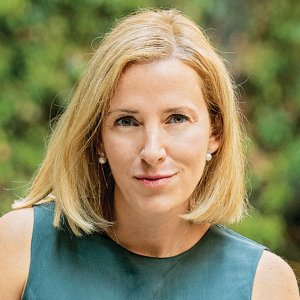Five Pillars to Winning Over a Seed Venture Capitalist

STORY INLINE POST
When it comes to that time of the entrepreneurial journey when your own cash has dried up, FFFs (Friends, Family and Fools) will not pour additional dry powder into your dream but you know you’ve still got this, it is time to think about the institutional seed round. I am talking about one important aspect (but not the only aspect) of a startup’s path: funding. It is very important to be aware that cash is king but if it doesn’t come along with growth among all business variables (especially of sales and profit), excess cash can turn into a bursting bubble. Hence, it is very important to not see capital raising on a sole basis.
I have been an investor for the past seven years with my personal capital and through my own VC, Dux Capital; therefore, I have made many mistakes and have made some accurate hits that have set my path toward analyzing investments methodically. There is a good portion of luck, timing and networking to make a good investment, but there must be a methodology to make decisions and to mitigate early risks. It is important to note that the following recommendations have helped me analyze my potential investments but do not contemplate all the variables that startups should cover.
Pillar 1: The Team
For me, this is the most important variable when analyzing a potential investment in seed capital as it resolves one of my personal dilemmas: “What is better? Having a terrible product that could be successful with an outstanding team or having a terrible team trying to be successful with an outstanding product?” The difference between them is that the outstanding team will always look for a way to work together, pivot and make things happen. They will also be creative enough to overcome a deficient product or a small market (probably they will never have them in the first place).
Great teams should be diverse in gender and expertise, should overcome their egos, should be quite open to listen to and receive feedback, should think differently, should get angry differently, should be resilient and empathetic and should always get along. It is quite difficult to find a team with all these different variables, but one should analyze how many of these are already met and how fast they can achieve those that are missing.
Pillar 2: The MVP (Minimum Viable Product)
The Minimum Viable Product is a great definition of true entrepreneurship as it comprises a good portion of the aspects that most founders want to achieve in their early stage: Minimum – the most cost-effective, lean, and practical solution; Viable – sufficient to get early adopters in a targeted market; and Product – tangible solution for a specific need. Once the MVP is done, founders will attract attention from potential customers, but also great feedback to modify the product and create a final solution.
It is extremely important to take enough time to prepare and execute a professional MVP. The founders should consider that most institutional investors will take this very seriously during the diligence of the seed round. Some recommendations for a successful MVP are to set a full timeline with achievable milestones, develop with a low-cost, identify the value proposition, identify your differentiators from competitors, prepare a professional feedback strategy, detect and sign early adopters and chat with advisers and competitors. When an investor reviews a professional MVP, it will have the sense of the need, the initial solution, the size of the market, the user experience, the capacity of the team to execute and their initial resilience.
Pillar 3: The Fit
A very common mistake of entrepreneurs while fishing in the market for their first seed round is that they spend a small amount of time exploring the general information of the target investor. It is very important to do so as entrepreneurs can save a lot of time and money if they know whom they are dealing with. The basic information that should be explored is the investment thesis (geography, stage, industries of focus and ticket size), the team (background, track record, expertise, diversity), the portfolio of past and existing investments (try to find similar investments or competitors), news or articles of the fund or its members, location, and people in common.
Once the fit is clear, entrepreneurs should work on ways to get a potential introduction with the investor (the best way is to look up people in common on LinkedIn who could make the intro) or even try cold calls/emails/messages to get their attention (this is not an optimal way, but it is worth trying).
Pillar 4: The Pitch
You don't get a second chance to make a first impression. It only takes seven seconds to make a first impression on another human being, according to a Harvard study of communication. This also applies to a seed round, especially when making a good pitch.
My general points for a good pitch include:
- Be on time
- Be concise
- Include: company purpose, problem/solution, market size, competition, product, business model, team, financials, and investment terms
- Be creative and unique (investors receive thousands of pitches per year)
- Leave a mark
Pillar 5: The Deal
Finally, it is very important to structure the seed round in an effective, achievable, and formal way. Be aware that most seed rounds are structured through convertible securities (e.g., Y-Combinator’s SAFE – Simple Agreement for Future Equity) as valuations are practically impossible to define because there is not enough historical data to use. The whole idea of the SAFE is to standardize the terms of a seed round to establish middle-of-the-road clauses between investors and entrepreneurs. Entrepreneurs should try to get market data of similar rounds of their incumbents and use them as average benchmarks.
Once the deal is structured in an achievable and reasonable way, investors should start signing term sheets for the round and entrepreneurs should work on maintaining their funding goals and terms (it is highly recommended to avoid shopping the deal among investors); and then, why not, create some FOMO (Fear of Missing Out).
























